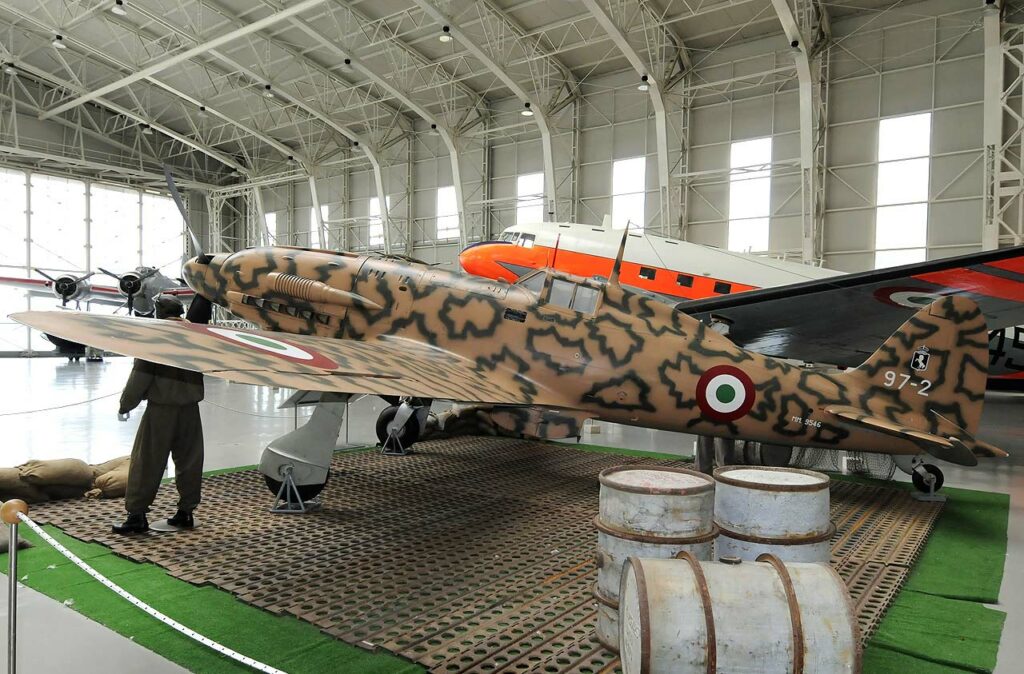The Macchi C.205 Veltro, an Italian WWII fighter, excelled in speed and maneuverability with a formidable armament.
This article delves into the Macchi C.205, a leading Italian fighter of World War II. It explores the historical context of its development, highlighting the need for a high-performance fighter to counter Allied aircraft. The C.205’s design is examined, emphasizing its technical specifications and the balance between speed, firepower, and agility.
The Macchi C.205 Veltro was one of the most capable fighters in the Italian Air Force during World War II. This piece aims to provide a thorough overview of the C.205’s development, design, performance, and combat history, highlighting its significance in the evolution of military aviation.
History of the Development of the Macchi C.205:
In the context of World War II, Italy faced the urgent need for an advanced fighter aircraft to counteract the increasingly sophisticated Allied planes. The Macchi C.205, developed by Macchi Aeronautica, was a response to this need. The project was spearheaded by Mario Castoldi, the company’s chief designer.
The development of the C.205 aimed to create an aircraft that could match or exceed the performance of contemporary Allied fighters, particularly in speed and maneuverability. The program was launched in the early 1940s, with the first prototype flying in 1942. The C.205 was a development of the earlier Macchi C.202 Folgore, incorporating a more powerful engine and other refinements.
Design of the Macchi C.205:
The Macchi C.205 was a single-engine, single-seat fighter with a length of 8.85 meters (29 feet) and a wingspan of 10.58 meters (34.7 feet). The aircraft was constructed primarily from light alloys and featured a streamlined, aerodynamically efficient design.
The C.205 was equipped with a Fiat RA.1050 Tifone engine, a license-built version of the German Daimler-Benz DB 605. This engine provided a significant increase in power compared to the earlier C.202. The aircraft was armed with two 12.7mm Breda-SAFAT machine guns and two 20mm MG 151 cannons, offering a formidable offensive capability.
The design of the C.205 brought several advantages, including excellent aerodynamics, high speed, and good maneuverability. However, it faced some production challenges, and the limited availability of high-quality materials during the war impacted its overall effectiveness.

Performance of the Macchi C.205:
The C.205’s Fiat RA.1050 Tifone engine produced approximately 1,475 horsepower, enabling a top speed of about 640 km/h (398 mph) and a service ceiling of 11,000 meters (36,089 feet). Its operational range was around 1,000 kilometers (621 miles).
Compared to contemporary fighters such as the Supermarine Spitfire and the North American P-51 Mustang, the C.205 was competitive in terms of speed and agility. However, it was somewhat outclassed in terms of range and high-altitude performance.
Military Use and Combat of the Macchi C.205:
The C.205’s armament made it effective in both air-to-air combat and ground-attack roles. It saw extensive use in the Mediterranean and North African theaters, engaging in dogfights with Allied aircraft and supporting ground operations.
The C.205 competed with various Allied fighters and often proved to be a formidable adversary. However, its impact was limited by the relatively small number of aircraft produced and operational challenges.
After the war, the C.205 continued to see limited use but was eventually phased out in favor of more advanced jet aircraft. It was not extensively exported or used post-war, marking the end of its operational life.
The Macchi C.205 Veltro was a notable Italian fighter of World War II, demonstrating the capabilities of Italian aircraft design and engineering. Its development was a significant effort to bolster Italy’s air defense capabilities, and in combat, the C.205 proved to be a competent and versatile aircraft. Although its impact was limited by production and operational constraints, the C.205 remains a symbol of Italian ingenuity in aviation, contributing to the legacy of WWII fighter development.
Back to the Warbirds section.